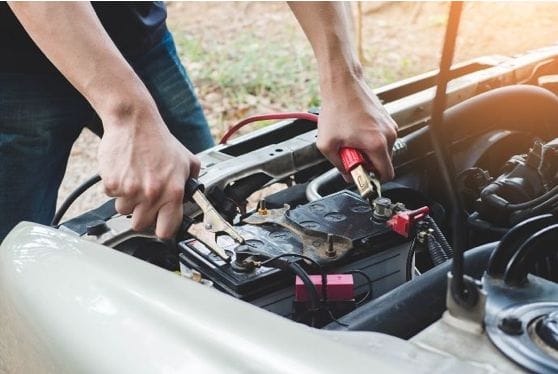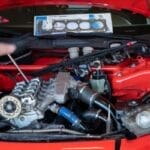Road trips are fun no matter your age. They’re great opportunities to get out of the house and see the world. When you take a road trip, it’s important to have fun and enjoy your time. Still, naturally you’ll travel in a car for long periods of time, too. Given that, it’s important to follow this car maintenance checklist before a road trip to ensure you’re safe and protected on the way to your destination.
Check the Fluids
One of the first car maintenance tips you should do is check the fluids. This typically refers to the engine oil, transmission fluids, coolant, radiator fluid, brake fluid, and windshield fluid. All of these are important to ensure you have a safe, stable travel. Typically, replace engine oil after every 3,000 to 5,000 miles, radiator fluid at 50,000 miles, brake fluid at 36,000 miles, and transmission fluid at 60,000 miles to avoid serious issues. Still, check your vehicle’s owner’s manual to determine when to replace these fluids for your specific make and model.
Perform General Maintenance
Of course, general maintenance is essential to ensure a safe and responsible drive. Whether it’s replacing your brake pads or lightbulbs, make these necessary adjustments. Your brake pads can wear down with use, which can lead to them working ineffectively. This is extremely dangerous, and you should replace them if you notice this issue. Replace the air filters to keep clean airflow to your engine as these can fill up with dust, debris, and bugs. You should also get your lightbulbs, belts, and hoses replaced to maintain optimal performance on the road
Check the Tires
Additionally, your tires are essential to your vehicle. Their condition is crucial for the safety, comfort, and fuel-efficiency of your drive. Make sure to keep your tires properly inflated for optimal performance. Underinflated tires use more fuel than normal and overinflated have less traction on the road, which makes them more unstable. It’s also important to rotate your tires every 5,000 to 8,000 miles. This evenly distributes the weight and recalibrates suspension. Still, you may need to replace the tires completely if there’s little to no tread left. Make sure to properly check your tires, no matter the travel distance. For instance, if you’re traveling from Augusta to Lake Oconee, visit a local tire shop to check for any issues beforehand.
Charge the Battery
Another important tip is to charge the battery. A charged car battery should be at least 12.6 volts resting and between 13.7 to 14.7 volts running. You can test if your batteries charged if you run the headlights. Consistently bright headlights show your battery has power, but if they’re dim or don’t get brighter after you’ve revved the engine, then you should charge it.








































